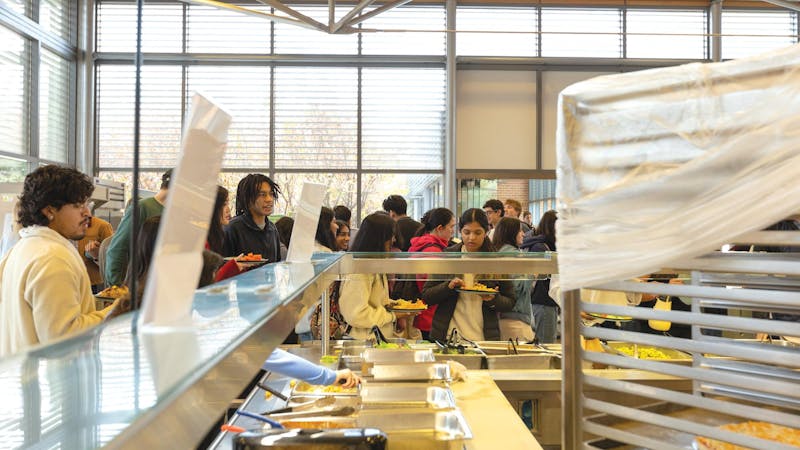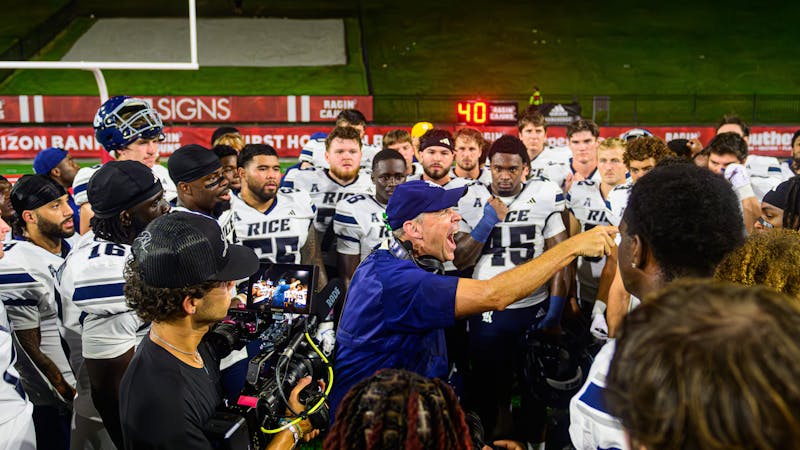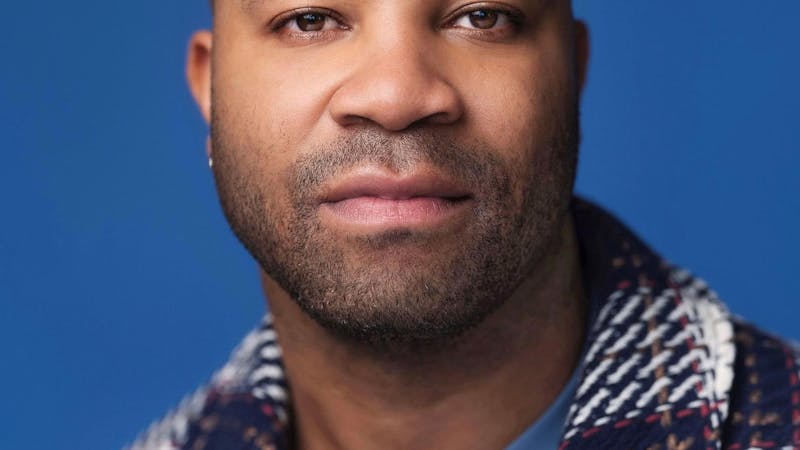Houston Poetry Slam excites, holds roots at Rice
Just across from the Preston light rail stop, Martell's Video Lounge stands sandwiched between the former site of GrumBar, windowed law offices and the neon flashing lights of Clark's dance club. Above the hushed sidewalks of a tranquil Friday night in Houston, there's a buzz of excitement on the second floor of 308 Main Street downtown. Last Friday, February 18, poets gathered to spectate and perform at the 2011 Houston Grand Slam Final in the small red carpeted loft on Martell's second floor. The Grand Slam Final was the last event of Houston Super Slam Week which began February 12 and included four nights of poetry bouts at across the city. The week was a celebration of a unique art form, highlighting Texas slam poets, and culminated in the final selection of a Houston team which will travel to Boston, Mass. this August to compete in Poetry Slam, Inc.'s National Poetry Slam.
Unlike traditional poetry, slam is a unique genre that emphasizes performance and audience engagement and centers on the discussion of contemporary social issues. Slam is focused on competition, turning a conventional art form into what many compare to a sporting match, an attribute that has drawn both avid supporters and hardline critics.
Houston Slammaster Cedric Ary, better known amongst fellow poets as Brother Said, describes it as a game.
"You can compare it to any other game, whether it's chess or football," Ary said.
And like any good game, Ary sees slam poetry as a venue for inspiring and exciting its competitors.
"Slam challenges you to be the best you can be."
A poetry slam consists of several rounds of competition between varying amounts of rivaling poets. A "4x4" match, for example, would involve four poets reciting one poem in each round. The winner, in this case, is the poet with the highest cumulative score after four rounds. Houston Poetry Slam makes use of the Olympic style of scoring in which each performance is ranked on a scale from one to 10, with one being the worst and 10 being the most exciting.
To add to the action, poets are given a time limit of three minutes and 10 seconds, after which a penalty is assessed. A total of five judges are chosen at random from the audience and asked to follow scoring guidelines that delineate three categories: originality, performance and content. Judges, however, can give an extra point to poets who truly impress.
A room filled with art-lovers and literary enthusiasts at last week's slam finals conspicuously excluded perhaps the most expected audience members: college students. The history of Houston Poetry Slam holds some of its roots on the Rice campus, a fact few would glean from the social composition of its spectators. This difference in the Houston slam landscape is troubling to its supporters, as Rice has somehow lost its presence in an art scene it helped create.
The Rice slam team, RHAPSODY, an acronym for Rice Has A Poetry Slam? Oh Damn Yo!, was founded in 2003 by then student Adriana Ramirez (Lovett '04). The team included four student poets: Ramirez, Stephen Bor, Jennifer Weinberg and Rassul Zarinfar and was coached by Houston poet Marcel Murphy. The team's success was as impressive as it was fleeting, having placed third in collegiate nationals in 2003 and 12th in 2004. Though the team seemed to exist until 2007, the last Rice poetry slam was in February of that year and the team has since faded out of the Rice social scene, presumably ending when interested students graduated without younger members left to continue their legacy.
Where the Rice students left off, local Houstonians joined in. The former Rice slam team was a fragment of a larger group of literary activists who congregated at what was known as the Southmore House. The House was what some would call an art commune, others a gallery for the artsy and unusual. There were concerts, traveling art exhibits, fondly remembered Naked Tuesdays and frequent poetry slams.
Noise complaints from neighbors, rising rent costs and difficulties with local authorities finally put an end to the venue. Before its disappearance poet Doug Shields, with support from the inhabitants of this bizarre residence, founded what was known as the Southmore House Slam in 2002. Poetry competitions took place every fourth Thursday and drew in local poets, including students from both University of Houston and Rice.
In 2005 the Southmore House Slam became Houston Poetry Slam, the name which it continues under today. However, slammaster Cedric Ary sees that much has changed in the past decade of Houston slam and, more broadly, in the past century to poetry at large.
"There's been an abandonment of verse," Ary said.
Ary sees the dwindling crowds and small number of participants at local slams as a reflection of people's fear of poetry as a genre.
"Verse is not easy to understand. It is one of the most misunderstood literary art forms, even among people who write it."
Ary also argues that poetry is changing stylistically by incorporating elements of prose, but also struggling in popularity because of its inherent nature.
"Poetry is on the fringe of the literary world. It has niche support. A consumer market is just not going to happen."
Slam poetry faces social acceptance issues in cities like Houston because of its progressive views and its criticism from academic circles. Ary feels that Houston's politics and conservative roots somewhat hinder slam's growth in popularity.
"Politics definitely factor into it," explained Ary.
Ary hopes that greater involvement from Houston youth and a rekindling of interest from local university students will help build a stronger slam community. Fellow Houston poet R.A.I.N. agrees that fear is an obstacle in getting poets to perform and participate in slam.
"It's scary," R.A.I.N. said, "but the [Houston] poetry community is very supportive."
Ary refers to this fear as a primal instinct but he also thinks that it is this fear that makes participating in slam so rewarding.
"If you have open, vacuous views and nothing to say about life then open mic isn't for you. But I have concerns about racism, pro-worker rights, anti-capitalism; I got views about the world, the way it should be, the way it is and that's what I write about. That's what slam's about."
To learn more about the Houston Slam Poetry team and the local slam scene, check out houstonpoetryslam.org. Additionally, Brother Said's audio recordings of 14 of his poems are available for download at ?bit.ly/BrotherSaid under the title of his album, "A Taste of Honey.
More from The Rice Thresher

Over 1,000 students petition against new meal plan
When Konstantin Savvon opened the Housing and Dining email announcing the new unlimited meal plan, he was instantly concerned about the impact on off-campus students like himself.

Rice football kicks off Abell era with commanding road win
For the first time since 2018, Rice football opened its season with a victory. Scott Abell was soaked with yellow Powerade following a 14-12 win on the road Saturday against the University of Louisiana at Lafayette, which won 10 games and made it to the Sun Belt Conference championship last season.

Former Rice basketball player Chadd Alexander talks Broadway show ‘Harry Potter and the Cursed Child’
Underneath Chadd Alexander’s Broadway costume, there’s ankle tape and wrist braces — same protective gear he wore as a walk-on basketball player at Rice, though now he’s performing eight shows a week in the ensemble of “Harry Potter and the Cursed Child” instead of running conditioning drills in Tudor Fieldhouse.

Please note All comments are eligible for publication by The Rice Thresher.